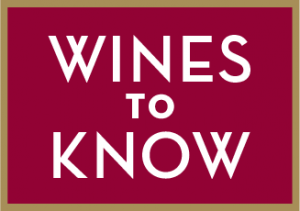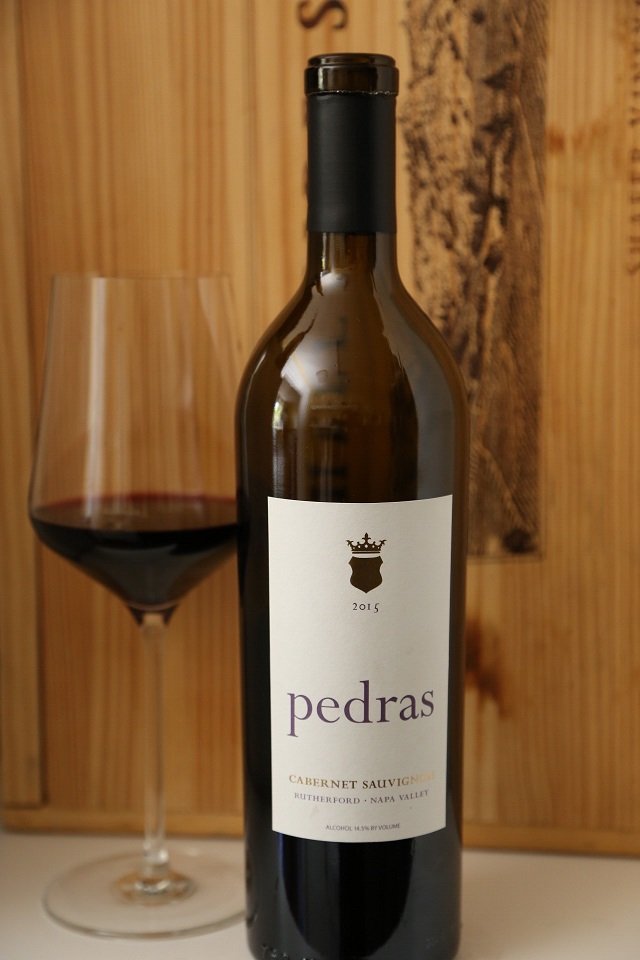
PEDRAS | Cabernet Sauvignon 2015
(Rutherford, Napa Valley, CA) $90
 Ninety dollars is not inexpensive. But I recently snuck this gem into a blind tasting of Napa cabernets over $150, and it came out on top. No surprise. For not only is Pedras delicious, beautifully structured, and spellbindingly long, it also has what I call choreography—waves of flavor, volume, and velocity. Great wines do not sit dully on the palate; they appear to move physically and spatially. Or, like this wine, they fairly whirl around the palate. If you love cabernets that are rich but vibrantly alive, this wine from a small family winery in the heart of the valley is for you. (14.5% abv.)
Ninety dollars is not inexpensive. But I recently snuck this gem into a blind tasting of Napa cabernets over $150, and it came out on top. No surprise. For not only is Pedras delicious, beautifully structured, and spellbindingly long, it also has what I call choreography—waves of flavor, volume, and velocity. Great wines do not sit dully on the palate; they appear to move physically and spatially. Or, like this wine, they fairly whirl around the palate. If you love cabernets that are rich but vibrantly alive, this wine from a small family winery in the heart of the valley is for you. (14.5% abv.)
95 points KM
Available at Pedras Wine Company

Because it’s nearly Halloween, we thought we’d ask: What makes orange wine orange?
A. Grapes coming into contact with beeswax during the aging process in special vats called qvevri
B. The coloration of the special clone of pinot gris grapes that can be used to make orange wine
C. Fermented oranges added to the wine during aging
D. The juice from a variety of white grapes is fermented with the skins and stems when the wine is made


HOW LATINA WOMEN ARE SAVING CALIFORNIA WINE
By Karen MacNeil
October 26, 2018
In the 1980s, I worked for a week picking grapes 10 hours a day as part of a harvest crew for Cakebread Cellars in the Napa Valley. I was assigned to a foreman (Mr. Miguel to me) who didn’t hide the fact that he hated the idea. No woman had ever been on one of his crews, never mind a Caucasian woman from New York. But Jack Cakebread was Miguel’s boss and after much pleading on my part, Jack had agreed to let me come out and work the harvest.
To be inside a closeted world dominated exclusively by Latino men was simultaneously fascinating, startling, and unsettling. It was also, of course, an opportunity so rare I doubted Continue Reading…

![]()
Booze
Once spelled bouse, the word booze comes from the medieval Dutch word büsen, meaning “to drink to excess.” Bouse dates back almost one thousand years, to Continue Reading…

Brainy Bon Appetit
In the Good-to-Know-I-Guess Department, we’ve just learned that you can buy canned brains on Amazon (From Books to Brains, an amazing corporate success story!). And why would one need brains other than the ones inside one’s own head? It turns out that brains (pork brains specifically) are part of the historic dish called “eggs ‘n brains” which was popular in the American South up until the mid-20th century. According to Atlas Obscura, the dish probably originated among farmers, but soon spread to more urban areas as well. Traditionally, fresh brains were used, but later, canned brains became common. I thought I had a fairly good grasp of food and wine pairing but this dish has stopped me in my tracks. What goes with brains? Beauty? Yeah, but that’s not a wine.

NINE HATS “Benches Vineyard” Pinot Gris 2016 (Horse Heaven Hills, Washington) $14
If you’ve got a thirsty gang of people coming over, this citrusy crowd pleaser would be terrific. 86 points KM
PITEIRA Vinho Tinto 2014 (Alentejo, Portugal) $12
This vinho tinto (red wine) is simple but has lots of personality. Made from indigenous moreto grapes that spend 6 months in clay vessels. Juicy, very lean, fresh. 85+ points KM
SIEGEL “1234 Reserva” Red Blend 2012 (Colchagua Valley, Chile) $15
Juicy, gamey, spicy and nicely bitter (like black chocolate). A terrific simple red with lots of personality. 89+ points KM
PRATS & SYMINGTON “Prazo de Roriz” Red Blend 2015 (Douro Valley, Portugal) $15
Lots of tannin and Clint Eastwood 5 o’clock shadow scratchiness here but (like Clint) very attractive. Needs ribs or burgers, and it’s perfect. 89 points KM

“Bull’s blood” is the name of a popular red wine in Spain.
Answer: False. “Bull’s blood”—or Egri bikavér—is a popular, well-known dry red wine from Hungary. It is made primarily from kékfrankos (the same grape as blaufränkisch) and kadarka grapes, grown in Eger, which is about halfway between Budapest and Tokaj. Legend has it that the wine dates back to the mid-16th century when the fortress of Eger, which belonged to the Magyars (ancestors of modern Hungarians), was besieged by Turks. Men, women, and reportedly even children fought the Turks fiercely, drinking huge amounts of red wine in the process. Allegedly, when the Turks encountered the Magyars’ ferocious fighting skills and saw their red-stained faces, they retreated, fearing that the Magyars obtained their prowess by drinking the blood of bulls.








